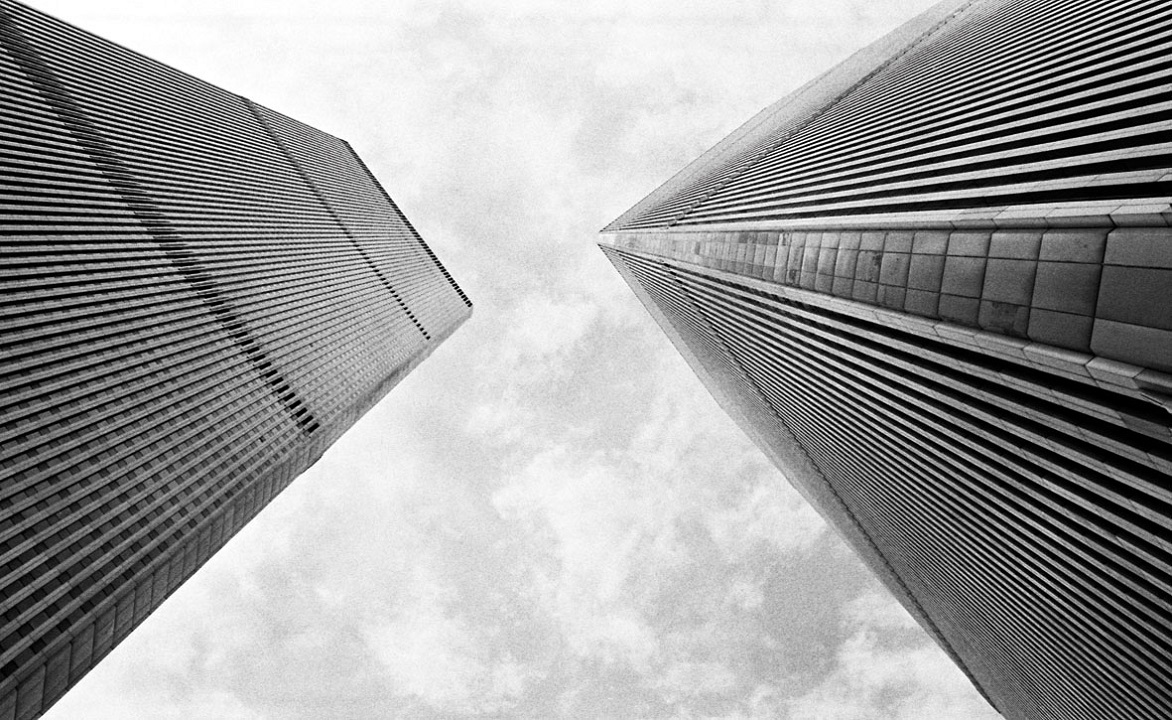Make a donation to the museum
World Trade Center Facts and Figures
When construction on the World Trade Center began in 1966, it was one of the most ambitious projects in size and scale ever conceived. Learn more about the complexity of the World Trade Center’s construction, operations, and management through these facts and figures.
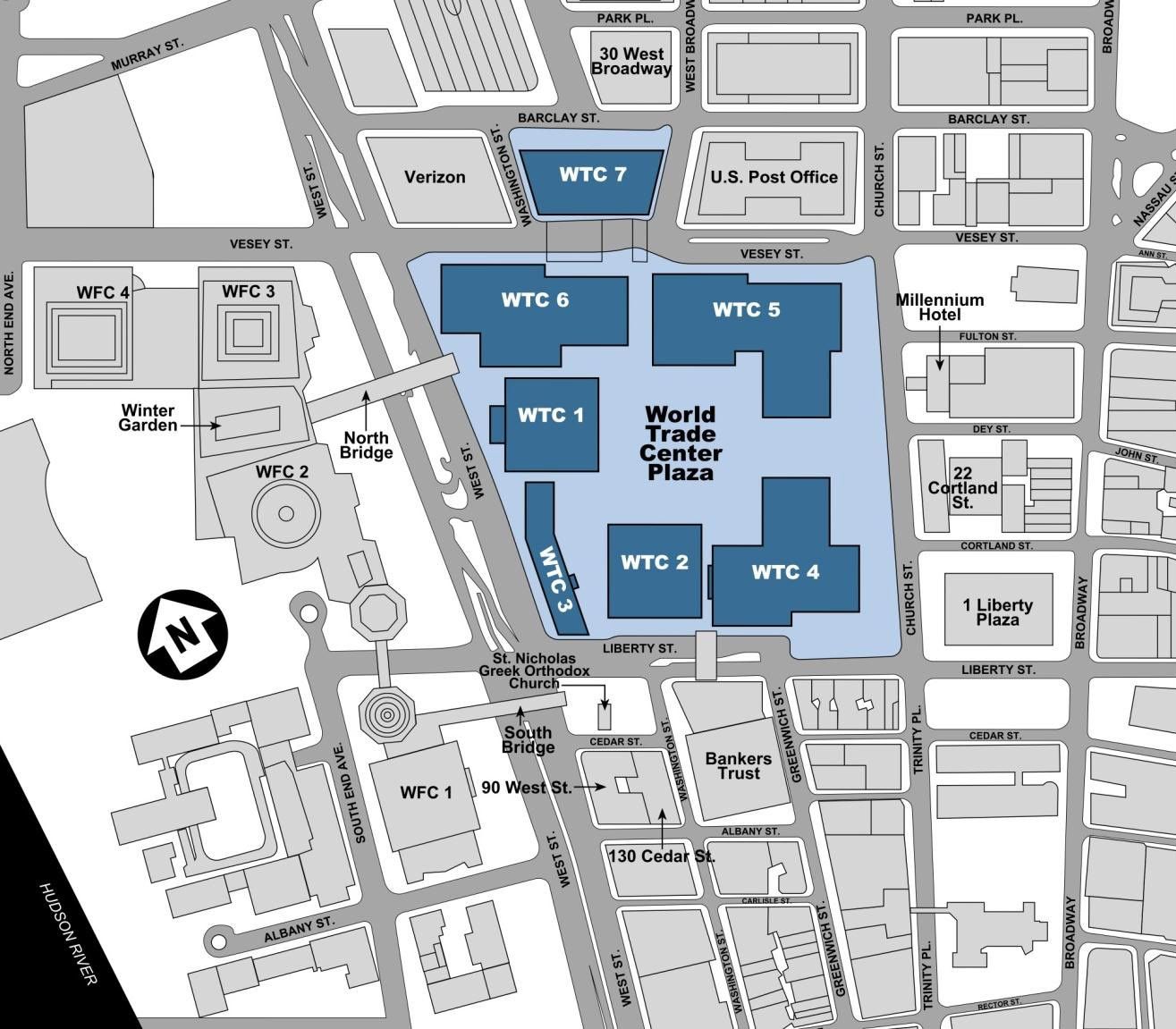
Map of the plaza level of the World Trade Center in 2001. Courtesy of the National Institute of Standards and Technology.
The original World Trade Center was a 16-acre complex that housed seven buildings and the five-acre Austin J. Tobin Plaza.
The World Trade Center contained almost 10 million square feet of rentable office space. This size equaled nearly three Disneyland Parks.
In 2001, the World Trade Center housed more than 430 businesses from 28 different countries.
The World Trade Center had its own zip code: 10048. New York State government offices at the World Trade Center used the zip code 10047.
Welcome to the world image
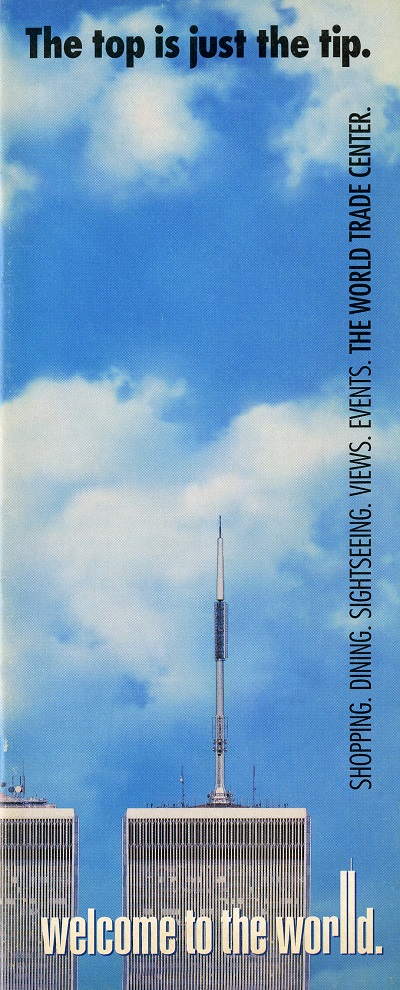
Front cover of a booklet produced by the Port Authority of New York and New Jersey with information about visiting the World Trade Center and the many attractions and amenities offered, circa 1994. Collection 9/11 Memorial Museum, Gift of Rae Ann Hoffmann.
The North Tower stood over a quarter-mile tall at 1,368 feet. Its transmission tower with broadcast antennas added about 360 feet more.
The South Tower stood over a quarter-mile tall at 1,362 feet.
Each of the Twin Towers had 110 floors.
Each tower’s footprint and floors were approximately an acre in size.
On windy days, each tower could sway up to almost 12 inches side to side.
There were 43,600 windows in the Twin Towers, equating to more than 600,000 square feet of glass. It took 20 days to wash them all.
There were 198 elevators in the Twin Towers and 15 miles of elevator shafts.
The Twin Towers were among the first skyscrapers to utilize a system of local and express elevators.
Each express elevator in the Twin Towers could hold up to 55 adults. When they were installed, their motors were the largest in the world.
Twin Towers in construction image
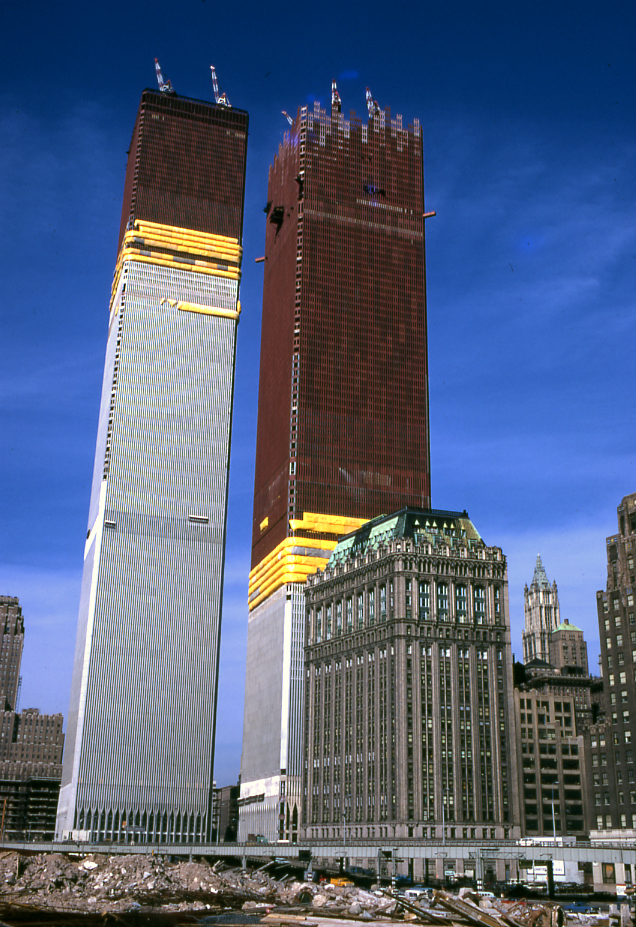
The Twin Towers under construction, circa 1970. Collection 9/11 Memorial Museum, Gift of Elizabeth Giannini in memory of William Borland.
Construction on the World Trade Center began on August 5, 1966, but most of the work in the first two years was below street level. The Twin Towers began their vertical climb in 1968. The North Tower was completed first in December 1970, followed by the South Tower in July 1971.
More than 425,000 cubic yards of concrete were required to construct the World Trade Center, enough to pave a sidewalk from New York City to Washington, D.C.
At least seven foundries supplied more than 200,000 tons of structural steel for the construction of the World Trade Center—more steel than was used to build the Verrazzano-Narrows Bridge, the longest suspension bridge in the United States, that connects Staten Island to Brooklyn, New York.
The World Trade Center was built entirely on landfill. As a result, the site’s foundations, including those of the Twin Towers, had to extend down to bedrock about 70 feet below street level.
During construction, workers removed more than one million cubic yards of soil and rock from the site. New York City used this landfill to help build Battery Park City, a neighborhood directly west of the World Trade Center.
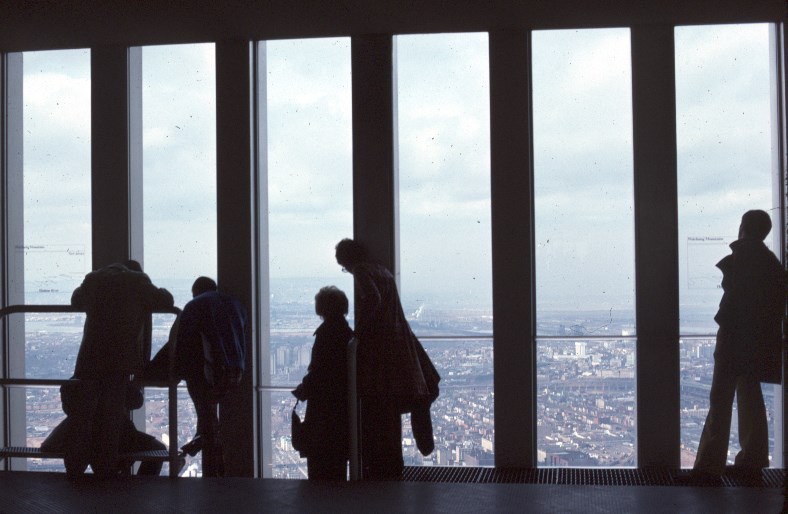
Visitors at the South Tower’s 107th floor observatory, December 1975. Collection 9/11 Memorial Museum, Gift of William Raff, survivor, South Tower, 82nd floor.
The South Tower Observation Deck was composed of an indoor observatory on the 107th floor of the South Tower and an outdoor viewing platform atop the tower’s roof. At 1,377 feet above street level, the outdoor viewing platform was the highest in the world when it opened in December 1975.
On average, the South Tower Observation Deck attracted 1.8 million visitors per year.
From the opening day of the South Tower Observation Deck in December 1975 through close of business on the night of September 10, 2001, more than 46.3 million visitors experienced the views from the tower’s summit.
On a clear day, one could see for about 45 miles in each direction from the South Tower Observation Deck.
The Vista International Hotel at 3 World Trade Center, which later became the New York Marriott World Trade Center hotel, opened in 1981. It was the first hotel to be built below Canal Street in 145 years.
The Vista International Hotel was badly damaged in the February 26, 1993 terrorist bombing, necessitating major repairs. It reopened on November 1, 1994. The building was later destroyed in the collapse of the Twin Towers.
The World Trade Center complex had more than 20 different food and drink vendors, capable of feeding a population of 150,000 each day. Many corporate tenants also had their own full-service kitchens to cater to employees and clients.
In 2001, the restaurant Windows on the World, which also operated two subsidiary restaurants—Wild Blue and the Greatest Bar on Earth—employed around 450 people who spoke more than 60 different languages. These dining places were located at the top of the North Tower.
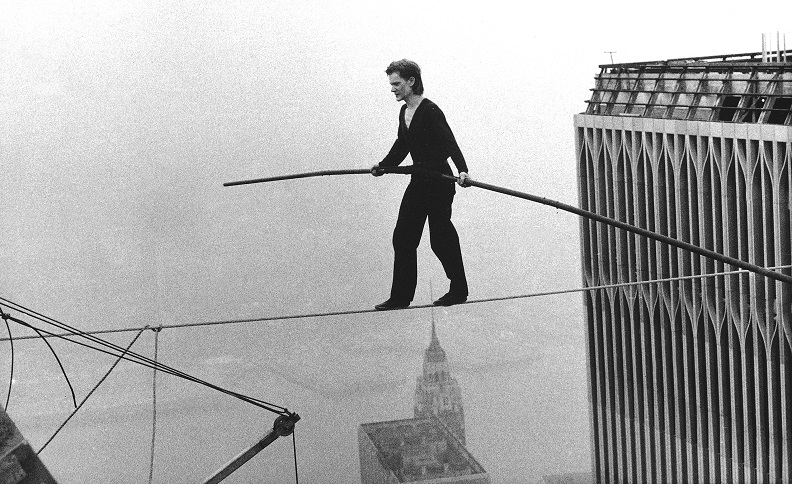
High-wire walker Philippe Petit walking between the Twin Towers, August 7, 1974. Photograph by Alan Welner, AP Photo.
High-wire walker Philippe Petit amazed New Yorkers by traversing a 131-foot-long cable between the Twin Towers, 1,350 feet above the Plaza. Going back and forth several times, he performed the act without a net on August 7, 1974.
On July 22, 1975, Owen Quinn performed the first parachute jump at the World Trade Center from the top of the North Tower. Quinn’s jump was unauthorized. At least four other people parachuted off the Twin Towers between 1980 and 1999.
On May 26, 1977, toymaker and mountain climber George Willig scaled the entirety of the South Tower’s facade. Through this act, Willig earned the nickname: the human fly.
